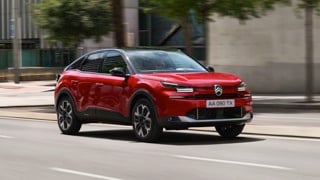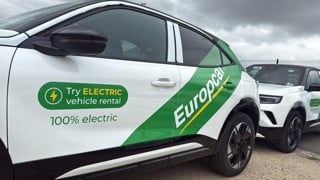The problem of plug-in hybrids not delivering fuel savings could be solved if the Government published official mileage reimbursement rates.
That’s according to fleet representative body ACFO, which says company car drivers should be paid from 4 pence per mile (ppm) for pure electric vehicles (EVs) and 5ppm for plug-in hybrids.
The figures for 100% electric vehicles (EVs), range-extended EVs, and plug-in hybrid petrol and diesel models have been submitted after ACFO hosted a fleet industry summit.
The meeting included representatives of the British Vehicle Rental and Leasing Association (BVRLA), contract hire and leasing companies, motor manufacturers producing plug-in vehicles and fleet managers operating zero emissions and plug-in hybrid cars.
ACFO chairman John Pryor told Fleet News: “The fleet industry is awash with stories of company car drivers choosing plug-in hybrid vehicles in pursuit of lower benefit-in-kind (BIK)tax bills, but not reaping fuel economy savings.”
As a result, some contract hire and leasing companies report having plug-in hybrids returned, with fleets incurring early termination charges, due to poorer than anticipated mpg returns. However, Pryor said: “The reality is those cars were not being used in the way they were intended.”
ACFO is calling on the Government to issue Advisory Fuel Rates (AFRs) for plug-in cars after providing HMRC with real-world mileage reimbursement figures.
AFRs apply where employers reimburse employees for business travel in their company cars, or require employees to repay the cost of fuel used for private travel. Published quarterly, they provide a range of rates based on engine size and fuel type (petrol, diesel or LPG), and, when used, are deemed to be tax-free.
“AFRs for plug-in cars are essential,” explained Pryor. “The figures we have calculated deliver a simple pence per mile mechanism that is cost-effective for employers; they are seeing a benefit from the more efficient technology, while employees are being fairly reimbursed for business mileage based on the capabilities of the plug-in vehicle technology.
“ACFO would urge HMRC to take the data and calculations the summit has provided and publish AFRs for plug-in vehicles from the quarter beginning September 1, 2017.”
ACFO’s calculations for plug-in cars follow a similar format to existing AFRs and account for the mean battery capacity from manufacturers’ information, weighted by available models and average battery capacity (kWh). Electric mileage range, adjusted downwards by 15% to take account of real driving conditions and impact on manufacturers’ stated range, also helps determine the rates, as does the average battery recharge cost.
It allows the plug-in rates to use the same AFR bandings based on engine capacity; they are simply adjusted for electric mileage range. The greater the zero-emission mileage range of a vehicle, the lower the reimbursement rate.
ACFO says it is vital that plug-in rates are published, particularly given from April 2020 company car BIK tax rates for ultra-low emission vehicles look set to be linked to a car’s zero-emission mileage range (although this element was removed from the recent Finance Bill).
Pryor explained: “That development adds complexity to the current company car BIK tax system, but, without an incentive linked to how an ultra-low emission vehicle is used on the road, it will not prevent drivers using the combustion engine alone in a plug-in hybrid car.
“Plug-in hybrid vehicles are at their most efficient when driven for as many miles as possible on electric power. Therefore, publishing lower AFRs for plug-in cars will help to encourage drivers to use the car in the optimal environmentally-friendly way.”
Without a reliable fuel cost figure it is also difficult for fleets to forecast a wholelife cost for EVs.
Alphabet, with more than 7,600 plug-in vehicles on its risk fleet, is keen to grow that figure further. David Bushnell, product manager mobility at Alphabet GB, said: “One of the key issues that industry bodies, leasing organisations and corporate customers have consistently demanded a resolution to over recent years is the lack of an AFR for electricity – also known as an ‘e-rate’.
“It seems a complete anomaly that while HMRC publishes AFRs for petrol, diesel and LPG on a quarterly basis, the Government is still lagging behind in publishing an AFR for a fuel which we are increasingly being told is a social, environmental and economic priority.”
Diesel remains the dominant powertrain in the corporate sector, accounting for 56% of fleet registrations at the end of Q1, while petrol accounted for 40% of the market. Alternative fuel vehicles (AFVs) meanwhile, were responsible for 4% of all fleet registrations – just 9,741 units out of a total fleet market of more than 260,000 cars.
The Mitsubishi Outlander plug-in hybrid is the most common plug-in hybrid car on the road. Analysis by the RAC Foundation of the latest Driver & Vehicle Licensing Agency (DVLA) data shows there were 25,447 Outlanders on the road at the end of 2016, significantly ahead of the pure-battery electric Nissan Leaf at 14,718 (fleetnews.co.uk, April 20). Third most popular was the Mercedes-Benz C350 e (5,890) which pushed the BMW i3 (5,858) down into fourth place. Fifth was the Renault Zoe (4,974).
There were 83,169 licensed plug-in car and van grant-eligible vehicles on the UK’s roads at the end of last year – a 74% increase on 2015 (47,922).
Bushnell believes publishing an official ‘e-rate’ would be a simple and effective way to overcome some of the remaining objections to EVs in the corporate market and would incentivise plug-in hybrid electric vehicle drivers to do the right thing and actually ‘plug in’.
“This has been an ongoing discussion topic for the fleet industry and HMRC for nearly five years,” he said. “Now is the right time to take action for the benefit of UK businesses and our air quality.”
ACFO also argues that a plug-in AFR would help drive adoption. In fact, it believes the absence of defined mileage reimbursement rates has been a handicap to some organisations including plug-in vehicles on their choice lists.
Pryor said: “ACFO acknowledges it is possible for businesses to calculate rates themselves and then obtain permission from HMRC to use them to reimburse drivers. However, it can be extremely time-consuming and difficult to obtain all the relevant data to undertake those calculations. Far better for HMRC to publish official figures as it does for petrol, diesel and LPG cars.”
The Energy Saving Trust (EST) worked with ACFO in developing a methodology to calculate the plug-in rates. EST fleet advice manager Ian Featherstone, said: “AFRs are easy to use and ensure tax liabilities are not incurred and fleets need the same mechanism to fairly reimburse drivers for whichever ULEV technology is chosen.
“This coordinated call for AFRs for plug-in vehicles will help accelerate their mainstream use and, ultimately, the market penetration needed to meet our carbon and air quality ambitions.”
Dale Eynon, head of group fleet services at the Department of Environment, Food and Rural Affairs (Defra), agrees. “Plug-in vehicles are an increasingly important part of the company car fleet and provide a more environmentally-friendly alternative to standard petrol and diesel powered cars,” he said.
“As we all look to see how we can best meet the operational needs of our business, at the lowest cost to our budget and the environment, the need to seek alternative powertrains such as plug-in hybrids becomes more important.
“Ensuring drivers are paid a mileage rate for business travel that is both transparent and fair, is vital to the successful deployments of such vehicles and the development of an agreed AFR will underpin this approach.”
HMRC was unable to comment on the ACFO proposals due to the forthcoming general election.
Do you think mileage reimbursement rates which reflect real-world driving for plug-in company cars should be published by HMRC? Vote in our online poll.
ACFO's recommended Advisory Fuel Rates (AFRs)
Pure Electric
|
Battery Capacity (kWh) |
AFR (ppm) |
|
Up to 40kWh |
4 |
|
Over 40kWh |
5 |
Plug-in Hybrid (Diesel)
|
ENGINE |
EV range (miles) |
E-AFR (ppm) |
|
Up to 1600cc |
<30 |
9 |
|
Up to 1600cc |
30-39 |
8 |
|
Up to 1600cc |
40-69 |
7 |
|
Up to 1600cc |
70-129 |
5 |
|
Up to 1600cc |
>130 |
5 |
|
1601cc -2000cc |
<30 |
10 |
|
1601cc -2000cc |
30-39 |
9 |
|
1601cc -2000cc |
40-69 |
8 |
|
1601cc -2000cc |
70-129 |
6 |
|
1601cc -2000cc |
>130 |
5 |
|
Over 2001cc |
<30 |
12 |
|
Over 2001cc |
30-39 |
11 |
|
Over 2001cc |
40-69 |
9 |
|
Over 2001cc |
70-129 |
6 |
|
Over 2001cc |
>130 |
5 |
Plug-in Hybrid (Petrol)
|
ENGINE |
EV range (miles) |
E-AFR (ppm) |
|
Up to 1400cc |
<30 |
10 |
|
Up to 1400cc |
30-39 |
9 |
|
Up to 1400cc |
40-69 |
8 |
|
Up to 1400cc |
70-129 |
6 |
|
Up to 1400cc |
>130 |
5 |
|
1401cc -2000cc |
<30 |
13 |
|
1401cc -2000cc |
30-39 |
12 |
|
1401cc -2000cc |
40-69 |
9 |
|
1401cc -2000cc |
70-129 |
7 |
|
1401cc -2000cc |
>130 |
5 |
|
Over 2001cc |
<30 |
19 |
|
Over 2001cc |
30-39 |
17 |
|
Over 2001cc |
40-69 |
13 |
|
Over 2001cc |
70-129 |
8 |
|
Over 2001cc |
>130 |
6 |
























Doug - 11/05/2017 11:50
The article makes a valid point, however it ignores that presently, drivers of PHEVs can expect to receive AFRs based purely on the capacity and fuel-type of the internal combustion engine in the vehicle - a change to PHEV-specific AFRs, while sensible to the wider industry, would make these vehicles less, not more, attractive to company car drivers because they would receive a lower pence per mile amount for business mileage than they would presently enjoy in the same vehicle.